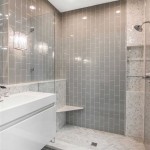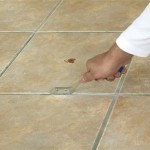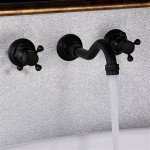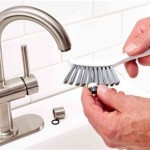How to Remove Mold from Sheetrock in a Bathroom
Mold growth in bathrooms is a common occurrence, particularly in areas with high humidity and moisture. It can appear as black, green, or white spots on the sheetrock, often accompanied by a musty odor. Mold not only poses a health risk but also damages the structural integrity of your bathroom. Addressing the mold issue promptly and effectively is crucial to protect both your health and your home.
Removing mold from sheetrock involves multiple steps, each requiring careful attention. This article will guide you through a comprehensive approach, outlining the necessary preparations, materials, and techniques for successful mold removal.
Understanding the Risks Associated with Mold
It is essential to understand the potential health risks associated with mold exposure before embarking on any removal process. Mold spores can trigger allergic reactions, such as sneezing, coughing, and watery eyes. For those with existing respiratory conditions like asthma, mold exposure can exacerbate symptoms. In severe cases, mold can also cause fungal infections and other health issues. Therefore, it's crucial to take precautions such as wearing protective gear and ensuring proper ventilation during the removal process.
Preparing for the Mold Removal Process
Before tackling the mold, it's important to properly prepare the area and gather the necessary materials. This includes:
- Clear the area: Remove any items that could obstruct the work area, such as furniture, towels, and toiletries.
- Protect yourself: Put on protective gear, including a respirator mask, gloves, and eye protection.
- Ventilate the area: Open windows and doors to improve air circulation and prevent mold spores from spreading.
- Gather supplies: Assemble the required tools and materials, including a scraper, a scrub brush, a bucket, a spray bottle, a HEPA vacuum, bleach, and a mildewcide solution.
Steps for Removing Mold from Sheetrock
Once you have prepared the area and gathered the necessary supplies, follow these steps for effective mold removal:
1. Assess the extent of the mold
Begin by carefully inspecting the affected sheetrock to determine the extent of the mold growth. If the mold is only superficial, you may be able to remove it with a scraper and a scrub brush. However, if the mold has penetrated deeper into the sheetrock, you might need to replace the affected section.
2. Scrape off the mold
Using a scraper, carefully remove the visible mold from the sheetrock surface. Be sure to scrape in a direction away from you to prevent mold spores from becoming airborne. Dispose of the scrapings in a sealed plastic bag.
3. Clean the area
After scraping, clean the affected area with a diluted bleach solution. Mix one cup of bleach with one gallon of water in a bucket. Using a scrub brush, thoroughly scrub the sheetrock to remove any remaining mold spores. Rinse the area with clean water and allow it to dry completely.
4. Apply mildewcide solution
Once the area is dry, apply a mildewcide solution to the affected area. Mildewcide solutions are specifically formulated to kill mold and prevent its regrowth. Follow the instructions on the product label for proper application. Allow the solution to dry completely.
5. Repair or replace the sheetrock
If the mold has damaged the sheetrock beyond repair, you will need to replace the affected section. This involves cutting out the damaged portion of the sheetrock and replacing it with a new piece. Ensure proper sealing of the seams to prevent future moisture penetration.
Additional Tips for Mold Removal
- Address the source: Removing mold is only a temporary solution if the underlying cause of the moisture problem is not addressed. Identify and resolve the source of the moisture, such as leaky pipes, poor ventilation, or condensation.
- Use a HEPA vacuum: Once you have cleaned the area, use a HEPA vacuum to remove any remaining mold spores from the air.
- Avoid using harsh chemicals: While bleach is an effective mold killer, it can also damage the sheetrock. If possible, use gentler cleaners like vinegar or baking soda to remove mold.
- Professional assessment: If the mold infestation is extensive or you are unsure how to proceed, consult a professional mold remediation expert. They can assess the situation, recommend appropriate action, and ensure the removal process is done safely and effectively.

Black Mold Removal And Prevention In Bathroom

The Ultimate Guide On How To Clean Mold Drywall

How To Kill Mold On Drywall Proven Techniques For A Al Home

Black Mold In Bathroom How To Fix Damaged Drywall Doityourself Com Community Forums

How To Remove Mold From Walls True Value

How To Get Rid Of Black Mold Removing From Shower Ceiling Walls

Bathroom Ceiling Mold Removal When To Clean Call Branch Environmental

How To Remove Mold From Walls

How To Get Rid Of Black Mold In Bathrooms

The Ultimate Guide On How To Clean And Get Rid Of Mold Pro Housekeepers
Related Posts






